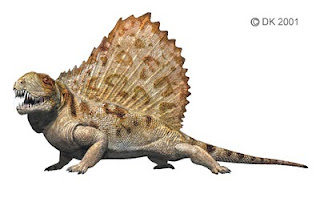 |
| Since a dog's nose doesn't have sweat pores, it's moisturized, aside from licking, by capillary action in the rivulets of the nose. |
If you've ever watched a good cops and robbers chase movie, or played tag as a kid you might understand how that the best place to hide is often in plain sight - make it so obvious that no one would look there. That's also what makes for a great twist at the end of a movie - it's right in front of you and you'd never guess it - brilliant.
 |
| Stick Man is 'under'-'standing' |
It's the same with this question. I'm captivated because it's so obvious. Why have I never thought about or questioned why dogs and cats (and plenty of other mammals) have wet noses (rhinariums)!!!
Let's look at some possibilities and consider how they could be falsified (I've been convicted that I need to add falsification tests to more of my blogs). (Let me say that I'm biased and clearly have one favorite answer)
- Thermoregulation - the nut shell: "Dogs and cats have wet noses like we sweat - to cool off."
- Compare cold and warm weather wet noses. They should be bigger in hot weather climates and smaller farther north/higher in elevation.
- Measure heat coming off nose. It should be significant if that's the purpose of the rhinarium.
- Consider blood flow levels and the shape of the organ in comparison to other 'known' thermoregulation organs. Consider the ears of a jack rabbit or elephant or the spinal ridge of a dimetrodon. Each of these organs got big, thin and heavily vasculated to radiate heat out. Those examples are quite different from a wet nose.
 |
| African elephants have bigger ears because they have a greater need to deal with excess heat. |
- Lick Hypothesis - *Winner of the Tautology Award. Talk about cart before horse. The websites that I saw this at (which were many) have not thought through this. Giraffe necks are long because they grew alot. Duh.
- Smell Catcher
- Identity/count olfactory receptors or channels to receptors in comparison to known receptor zones.
- Consider why being able to passively smell (as opposed to actively breathing in the scent) might be an advantage - high wind environments, low breathing rates...
- Interesting article on the rhinarium's smell sorting function.
- Weathervane - related question: why do many animals have two nostrils, but they're on the same side of the head?? One might assume we have two nostrils in order to sense the direction a smell is coming from. This is why you have ears on each side of your head. Your brain does split second calculations comparing which ear heard first and loudest. Have you ever had the experience where you hear something unexpected directly behind you and it sounded like it was in front of you? It's rare, but I have. Like abnormal psychology has much to teach us about normal brain function, so can a slight malfunction of our normal sound directionality perception teach us how important and powerful having ears on each side of our head to determine the location of the sound.
- Count/identify temperature and touch nerves in comparison to other parts of the skin.
- Is the wet nose omnidirectional? If it's not then it wouldn't be a very effective weathervane. It needs to be able to sense zephyrs of wind from many vantage points and contrast the evaporative coolness on different sides.
- Anesthetize one and later both sides of the outside of the nose. See if directionality of smelling is inhibited or if animal is misled to the wrong direction. As in, if the right side is anesthetized that the animal goes to its left to find smell source since all wind will seem to come from the left.
- Anesthetize the olfactory cells in one side of nose. See if directionality of smelling is inhibited.
- Create windless environment and see if directionality of smelling is inhibited.
- Do animals that breath through one nostril at a time (like humans, supposedly we alternate nostrils every 6 hours) need directional smelling less or have other adaptations to deal with the problem? Is this alternating form of breathing widespread?
- Are animals that have dry noses more likely to have nostrils that face opposite directions to make up for a directionality sensing deficit?
 |
| A theoretical sketch of the possible advantages and disadvantages of having nostrils on opposite sides of an organisms head versus a nose with a built in weathervane. |
Images are from: here, here, here, here, here, here, and here





What's the purpose of the slots on the sides of dogs' and cats' nostrils?
ReplyDeleteMy understanding is that when a mammal has his nose to an object to smell it, the slits on the outside of the nose allow for an out-breath that doesn't blast the object with lung air, reducing its subsequent smell quality. That is, in-breaths go through the large, frontal nostril opening and out-breaths exit through the side slit.
Delete